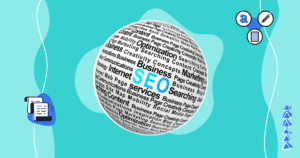In an era when information is customized, interactive experiences are very valuable, as clients expect a lot more from the brands they consume. They want deeper, more meaningful connections that go beyond a simple purchasing process.
In this scenario, companies need to start as soon as possible evaluating where to fit their customer success in the cost structure. That is how you meet your audience’s expectations and create relationship-based competitive advantages.
To help you trail this path, we have a special article for you! Let’s talk about the importance of customer success and how you can correctly allocate resources for it. We will go through the following topics:
- What is the importance of the customer success team?
- Where may it fit?
- Why associate it with the Cost of Goods Sold?
- Why associate it with Sales and Marketing?
- What to take into consideration in this choice?
Download this post by entering your email below
What is the importance of the customer success team?
Customer success, in its core, is a strategy or business methodology focused on ensuring that your clients get what they expect from their interaction with your brand.
It can be buying a product, using a service or even a non-commercial relationship such as consuming content or getting in contact to solve a doubt or an issue.
As the market changes towards more personalized, customized deliveries, this team starts to become a vital necessity for companies around the world.
Think about what these new expectations mean. The audience doesn’t want to be just a client but to be a part of the brand’s life. They seek for that exchange, to be special.
In that sense, customer success becomes a bridge between what the company has to offer and what the public wants from it, so they can meet halfway.
It becomes a close observer that can anticipate and adjust to new trends, buyers’ habits, and needs. But not only that. By having this kind of insight, it can also be the team responsible for acting proactively and delivering what the audience wants before competitors can even react.
Where may it fit?
At this point, a lot of business professionals already know that customer success is important and are ready to invest. The main question after that first step is: where to fit the team and how to allocate its resources?
Why is that? Mainly because CS is a multidisciplinary team with variations in scope and goals. Think about it: these are the people who assess ways of giving clients a great brand experience.
At the same time, they are the ones to follow converted customers and ensure they are having the desired outcome based on what the company has promised.
They can help your client succeed during and after a purchase. That is a lot to cover, and the reason why CS can be fit in two main ways inside a business.
Costs of Goods Sold
COGS is a key indicator for summing up all the costs involved in creating, developing, and delivering a product. In short, it is what the company spends to have it ready to sell.
The first way to look at CS is as a part of your product. One of the necessary steps to bring it to light and ensure people will have an optimal experience when buying and using it.
Sales and Marketing
Another way of looking at this is customer success as a guiding force for leads in the middle of their customer’s journey.
From this point of view, CS can attract new leads and start ensuring great experiences with the product even before the client buys it. The team can be a great addition to attract, nurture, and seal the deal.
But how exactly do they fit in both departments and what advantages a company can have from each one of these strategies? In the next two topics, we want to go through these discussions in more detail.
But first, we want to be clear about why that choice matters. Being able to correctly position efforts and investments will give managers a better vision of how the team is performing and impacting the profits.
When you use a ROI calculator, for example, you need to know the source of investments and their correlation to assess their actual return.
So it is not just a matter of filling the right fields in a spreadsheet. It is about knowing the real cost of products/services and the real cost of providing great experiences to your audience — from the first contact with the brand to purchase and beyond.
Why associate it with the Cost of Goods Sold?
Putting customer success under the COGS’ tab is a valid way of looking at it but it is more common to see in startups and digital products.
The reason for this is quite compelling: if experiences and brand connection are growing demands from audiences, then CS is an indivisible part of what you are selling.
The Digital era is an era of blurred lines. A product isn’t anymore just itself but what it means, how it feels, and the message it sends.
If this is a kind of pursuit your company is going for, then customer success is definitely a part of COGS. Associating both things will not only help you assess your costs better but also change a little of the company’s mindset when developing the goods to sell.
Think about that. When creating a new solution in this scenario, form, function, and price are not enough to compete for the audience’s attention.
This “one more thing” that makes your products unique is not always palpable. A feeling, a status, a meaning. There is where the CS team becomes crucial for success.
So, if you are looking for that kind of strategy for your goods, the answer is easier. But maybe it isn’t the same for everyone.
Companies that put customer success under COGS will naturally end up with a more expensive product to sell. This can influence pricing and profit margins.
Especially when dealing with investors, it can be tricky talking about higher costs for intangible aspects of a development process.
So you will need to have a great structure to back up this importance and educate how CS is imperative for perceiving greater value in what you sell.
Why associate it with Sales and Marketing?
Fitting customer success costs under Sales and Marketing is a subtle but meaningful difference when comparing it to COGS.
First of all, it makes your product cheaper. We know the money is being spent either way but the notion about costs and return can enable different structures, more flexibility, and another point of view for investors.
So, why put it here? Well, as we already said, it is harder and harder to draw lines that isolate departments and teams within a business. The brand is the product, so all efforts from creation to selling are a part of it.
Looking at it like that, CS can be a way of optimizing conversions and reinforcing customer loyalty strategies. If the buyer’s expectations are exceeded, they will surely come back for more.
So we can’t at all separate this team’s effort from Sales and Marketing when they are planning something new — a sales enablement strategy or investing in interactive content, to give some examples.
Their knowledge of the buyer personas and their direct relationship with converted clients will be vital when making decisions in those areas. So why not account it as a part of them?
The only downside here is that CS can take resources from Sales and Marketing — which could be used both in volume and reach of well-designed content.
But on the other hand, a closer interaction between all of these teams can be a great way of planning and developing better, more assertive advertising campaigns. You trade volume for accuracy, which is always great to do when investing in Digital Marketing.
What to take into consideration when deciding about customer success in cost structure?
As you can see, there are some good points and some challenging points when choosing where to fit CS. In the end, there is no universally right answer.
So what you can do to make this decision is understanding better your own product and production processes so you can determine where it makes more sense for it to be.
If the company sells digital, experience-focused goods, then maybe COGS is the better place for it. If it is a startup or a smaller business, it can make sense too. But if Sales and Marketing are a great part of the expectations you sell to your audience, then they can become a better fit.
If you are investing a lot in those departments, like a great B2C or B2B marketing plan, maybe it is time to test how customer success performs aligned with this new plan.
Especially if you invest in outsourcing CS as SaaS, this cost will make more sense apart from your product. After all, it becomes not COGS but OPEX.
These are the main points but each business has some particularities that can determine the answer to this question for you. Knowing your product and your audience is still the best way to approach the matter.
So, our goal was to expand the topic and give you a better view of customer success in the cost structure. Now, it is your time to assess the role of CS in your company, align the discourse with the accountants, and use the team as a real sales and brand loyalty powerhouse.
Want to know better how to do it? Then this post will help you understand how Content Marketing assessment may help you allocate customer success costs. Take a look!







